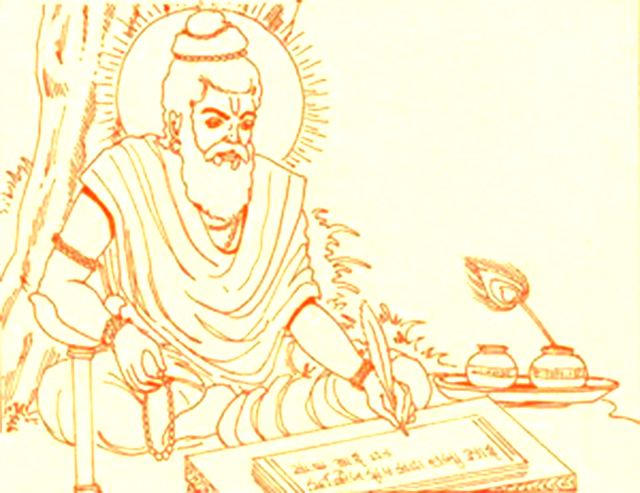Sadhana Pada
sadhana = practice; sadhaka = the one, who practises
Chapter 2 of the Patanjali Yoga Sutras is called Sadhana Pada; this chapter is about you, the Sadhana, and your practice (sadhana) – your yoga practice. It focuses on concrete things with practical explanations one can do in order to diminish and eventually get rid of obstacles in our lives (also looked at as the causes for our suffering; in Sanskrit also called the 5 kleshas). It outlines that the practice of yoga reduces our suffering caused by these kleshas. It explains what the kleshas are and that the root cause of all suffering is that essentially we forgot who we really are and get caught up in external obstacles. That we are more than just a mere physical body, more than our mind and thoughts and more than our breath.
That our true self is eternal, abundant and always at peace. That from that space everything is possible, we are unafraid and we are always enough. This not-knowing or forgetting who we really are in our essence, Patanjali calls avidya (ignorance) which underlies all kleshas It is not the ignorance commonly know as not knowing something mentally or not having learnt something through studies but it is the deeper knowledge of recognizing that true Self. In that knowledge there is no more separation from any life-form nor anything, no more competition, we are at peace, we are one with everyone and everything. That is the gift of yoga. And how do we get there? Patanjaliis very practical in outlining the 8th fold path – the Ashtanga Path of Yoga (astha = 8, tanga = step). When we walk step by step on this path, then we have a chance to transcend suffering here in this lifetime and even break the cycles of rebirth (samsara).
- Sutras 2.2. – 2.9.These sutras describe the concept of the Kleshas and explain each of them carefully. Sutra 2.4. teaches that avidya – spiritual ignorance – mistaking the ever-changing impermanent world for the reality and getting caught up in the constant cycles of change – is the is the source of all pains and sorrows whether dormant, attenuated, interrupted or fully active: “avidya ksetram uttaresam prasupta tanu vicchinna udaranam” . While our suffering might not be acute, we are still suffering when we lack spiritual wisdom and are invested in resting happiness and satisfaction out of achievements in the external world. The answers for us lie deep within. From avidya– ignorance, stem all other forms of suffering, which are described as follows:
- “drk darsanasaktyoh ekatmata iva asmita“ – Egoism, asmita, is the identification of the seer with the instrumental power of seeing (2.6.). The instrumental powers of seeing describe the senses of perception and the intellect (buddhi). If one solely identifies with their sense perceptions and the intellect and they become the source of one’s identity, one will suffer. You may identify with your gender, your sexual preference, the clothes you wear, your ethnicity or the style of yoga you practice. Perhaps your perception of yourself includes that you are tall, muscular, sensible, brunette, tattooed, compassionate, a parent, a yoga practitioner and a gourmet cook. These qualities are a big part of how you see yourself and how your loved ones and friends see you, and appreciating and enjoying them is an important part of the way you engage in the world. The challenge, and where the lesson of this sutra lies, is that while it’s great to appreciate and value all of these aspects of yourself, if you identify too closely with the changeable aspects of yourself, Patanjali says that you set yourself up for disappointment and suffering.
- “sukhâanuasayîrâga”– Pleasure leads to desire and emotional attachment (2.7.). Ragah here is understood as attachment or desire. When clinging only to the things that seem to bring pleasure, one will suffer. Such as overindulging into food, sex even clinging to your child or boyfriends will ultimately hurt you.
- “duhkha ânuasaayîdvesah“– Unhappiness leads to hatred (2.8.). Dvesah here means aversion, and when one solely aims at averting or even hating those things that are seemingly painful, one will suffer. It is not the pain that makes one suffer; it is identifying with a painful experience and trying to avoid it.
- “svarasavâhîvidusah api thata arudhah abhinivesah”– Abinivesah – fear of death or self-preservation or attachment to life is the deepest of all afflictions. It is found even in wise men and is said to be the underlying cause of all fears. (2.9.).
According to these Sutras the five afflictions are then: avidya – ignorance, from which all other suffering comes from, asmita– ego identification, raga– craving, dvesah– aversion, and abhinivesah– fear of death.
- Sutras 2.26. – 2.55. These Sutras introduce the 8 limbs of the Ashtanga path and discuss the first 5

